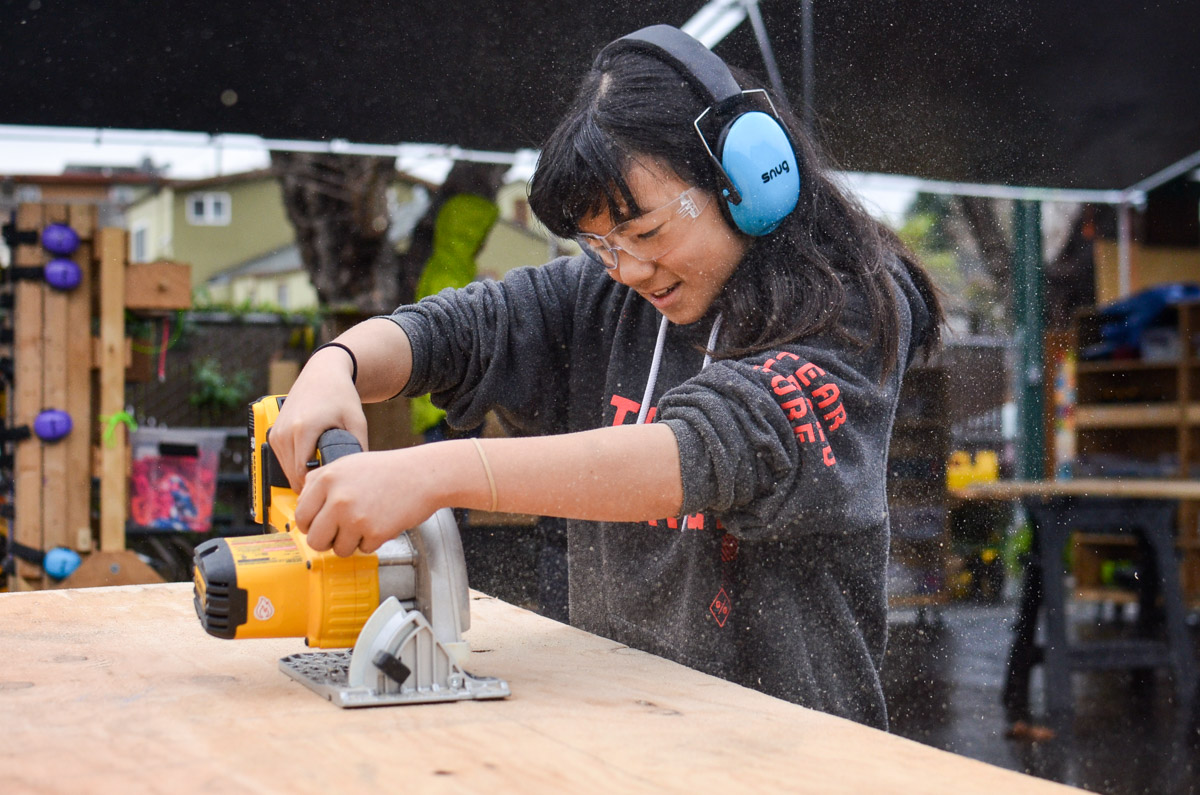"Are you comfortable with a chop saw, or would you like me to show you how to use it?"
A 15-year-old girl asked me this question a few years back when I first joined the team at Tinkering School as they built new yurts in preparation for overnight camp. The inquiry alone was enough to put a huge smile on my face, not to mention her confidence or the coherency of the tutorial this young woman launched into after she asked. I certainly didn't know how to safely operate a chop saw when I was her age, and I doubt I would’ve had the confidence to approach an adult twice my age and casually offer to teach her something.
There were countless moments that summer where I observed young girls confidently wielding power tools to transform their design concepts into functional, celebrated realities. The whole summer inspired me, but it was the encounter with that young woman that has stayed top of mind and continues to deeply inform why I work in this field. But many times, I’ve found myself wishing the encounter hadn't stood out as such an anomaly.
The world is changing for girls. A recent European study spearheaded by Microsoft and the London School of Economics shared "that girls today are optimistic about gender equality overall and believe they are the first generation to reject the idea that boys have a natural aptitude for STEM career choices," according to Shelley McKinley of Microsoft. The progress is real, but gender stereotypes and pressure still have a stronghold in our society. Boys still express interest in Project Ember at twice the rate girls do, so we cap male enrollment to ensure girls have equal access to the experiences we offer.
Though our camps are open to children of all gender identities, it is core to our mission to transform the male-dominated STEM space into one that feels safe and empowering for all kids. Our program is rooted in collaboration; we design projects too big and too complex for kids to build on their own. There's a lot we love about large-scale design, but perhaps the greatest thing it offers is the opportunity for kids have to see one another's ideas as valuable and essential to their collective success. Curiosity and inclusivity are fundamental building blocks for all our projects.
Over our next few blog entries, we'll dive into the lessons we've learned and the ways Project Ember supports young girls as they carve out and claim their rightful place in the STEM world. We'll share stories from our female alumni, junior collaborators, and predominantly female staff, in her own words.
At camp, we take creative risks, try out ideas we aren't sure will work, and accomplish more than we thought possible through teamwork. Our projects may be primarily made out of lumber and screws, but the real product of the camp experience is a child's belief that they are capable of changing the world they inhabit.
-From our Co-Founder, Katie Richmond





